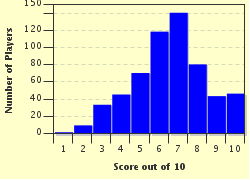Quiz Answer Key and Fun Facts
1. No quiz on this topic would be complete without a question about Apple, the company arguably responsible for firmly entrenching the "i" prefix into the cultural zeitgeist of the late Nineties and the Noughties. Which one of these products was the first to be produced and marketed by Apple with an "i" at the start of its name?
2. Cable news giant CNN applied the "i" prefix to its citizen journalism program, which was launched in 2006 to allow ordinary members of the public to submit content for breaking news stories. What was the name given to this initiative?
3. American cable channel Nickelodeon jumped on the "i" bandwagon in 2007 with the name of its original sitcom about a teenager who hosts her own web show from her apartment with the help of her two best friends. What was this television show called?
4. In 2001, Californian dot-commer DigiScents, Inc. developed a product that would enable Internet users to engage their sense of smell while surfing the web, playing a computer game, or reading their e-mail. Sadly, the concept didn't get off the ground, and the product never progressed beyond the prototype phase. Perhaps the venture would have been more successful if the product had a better name. What unfortunate moniker did the company choose for this unique device?
5. In 2007, a Scottish company called Touch Bionics adopted the "i" prefix in the name for its newly launched robotic prosthetic that served as a replacement body part. What did they call this groundbreaking product?
6. Fast food giant KFC bought into the whole iFad phenomenon in 2010 with the introduction of a new "taste sensation" throughout Europe and the Middle East. This sandwich was available in a variety of flavors, but was essentially a crispy chicken strip wrapped with other ingredients in a warm, colored tortilla. What was the name of this new snack item?
7. German consumer electronics manufacturer TrekStor caused a minor controversy in 2007 when the name of its newly launched product became the subject of considerable ridicule and outrage. What was the product name that caused so much offense?
8. This British national daily newspaper has been criticized for being more of a "viewspaper" than a newspaper. On October 26, 2010, some seven months after it was purchased by Russian oligarch and ex-KGB agent, Alexander Lebedev, the paper launched a sibling publication known simply as "i". Which newspaper was this?
9. The company behind the Roomba line of intelligent autonomous vacuum cleaners shares its name with a well-known collection of science-fiction short stories by Isaac Asimov that also inspired a 2004 film starring Will Smith. Name the company.
10. In 2009, Kraft Foods launched a new product in Australia that combined the ubiquitous food paste Vegemite with processed cheese. The company held a contest to pick a name for the new product, but was forced to change it after the overwhelming negative reaction to the winning entry. The name everyone hated was "iSnack 2.0".
Source: Author
jmorrow
This quiz was reviewed by FunTrivia editor
stedman before going online.
Any errors found in FunTrivia content are routinely corrected through our feedback system.

